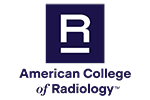Cerebrovascular Diseases - Aneurysm, Vascular Malformation, and Subarachnoid Hemorrhage
Cerebrovascular diseases affect blood vessels and blood supply to the brain. They include aneurysms (bulge in a blood vessel), vascular malformation (abnormally developed blood vessel), and subarachnoid hemorrhage (SAH) (bleeding surrounding the brain).
For a known SAH, arteriography cervicocerebral (AC) (imaging of blood vessels in the head) and CT angiography (CTA) head (CT scan of blood vessels of the brain) with contrast (a special dye) are usually appropriate. MR angiography (MRA) (MRI of blood vessels of the brain) without contrast may be appropriate.
Imaging tests for suspected vasospasm (sudden constriction of blood vessel) include AC and CTA with contrast. Ultrasound duplex Doppler transcranial (ultrasound waves to assess blood vessels in the brain), MRI or CT perfusion (measures blood flow) with contrast and MRI or CT without contrast may be appropriate.
With known, untreated aneurysm, MRA without contrast and CTA with contrast are usually appropriate. AC and MRA without and with contrast may be appropriate. For known, treated aneurysm, AC, MRA without and with contrast, MRA without contrast, and CTA with contrast are usually appropriate.
MRA without contrast and CTA with contrast are usually appropriate to screen high-risk individuals.
For known vascular malformations, AC, MRA or CTA with contrast, MRA without and with contrast, and MRA without contrast are usually appropriate. MRI without and with contrast and MRI without contrast may be appropriate.
With suspected central nervous system vasculitis (inflammation of blood vessels), MRA or MRI without contrast or MRI without and with contrast are usually appropriate. AC and CTA with contrast may be appropriate.
For more information, visit the Vascular Malformations page.
This page was reviewed on July 25, 2022


